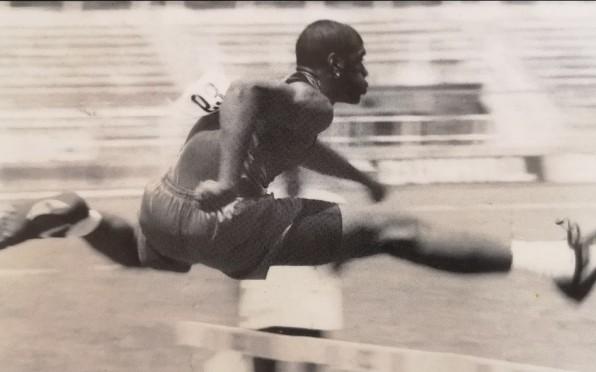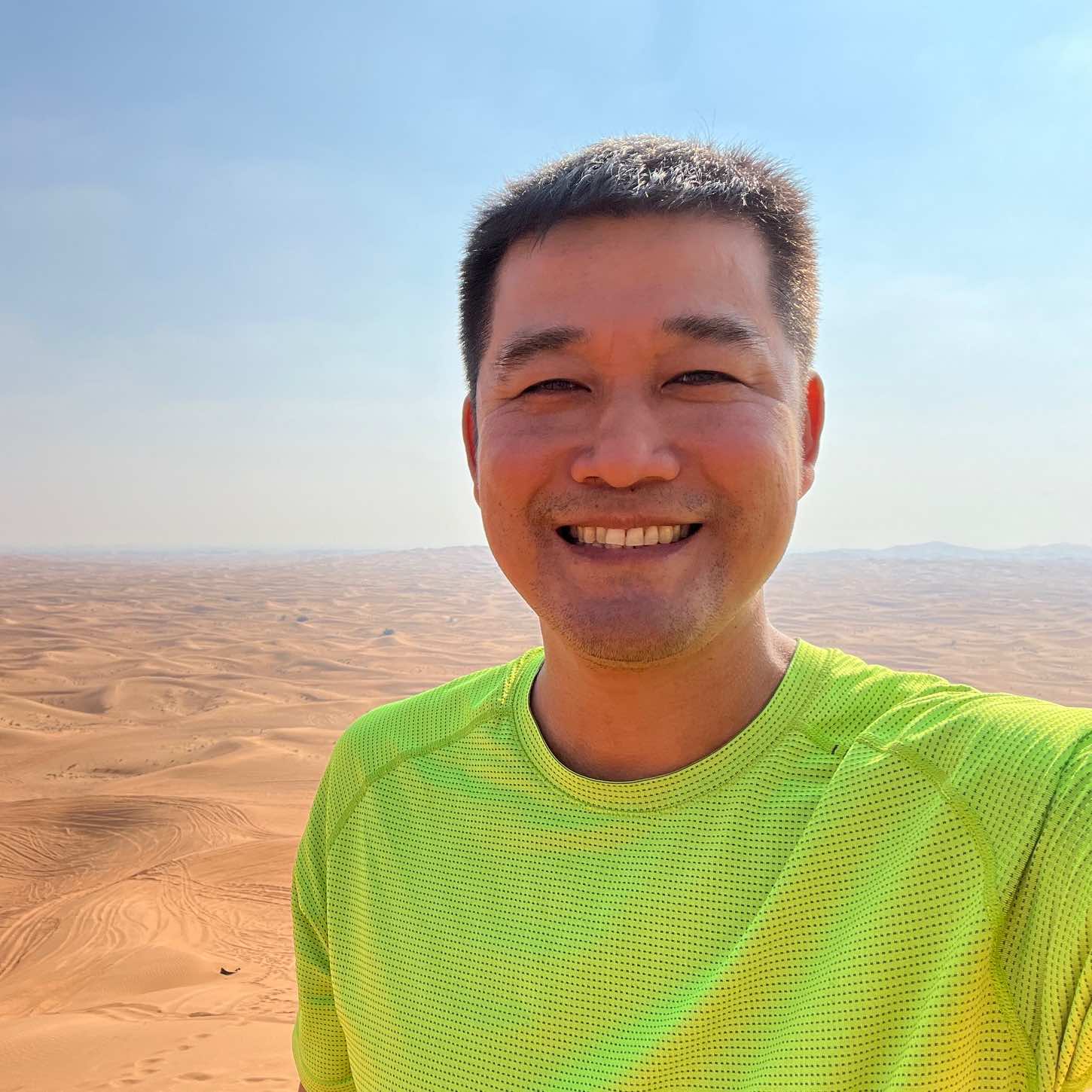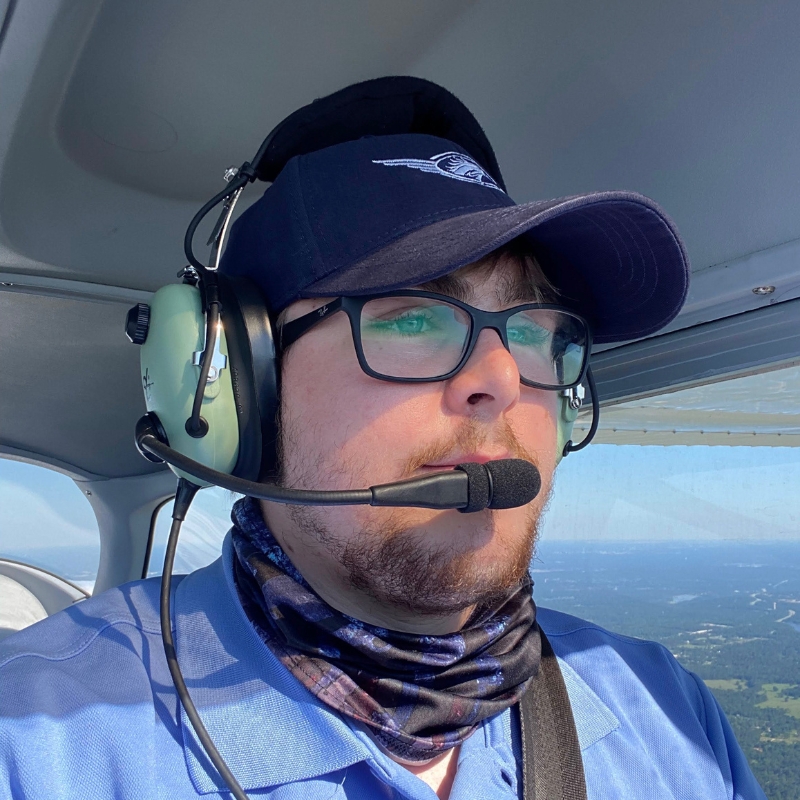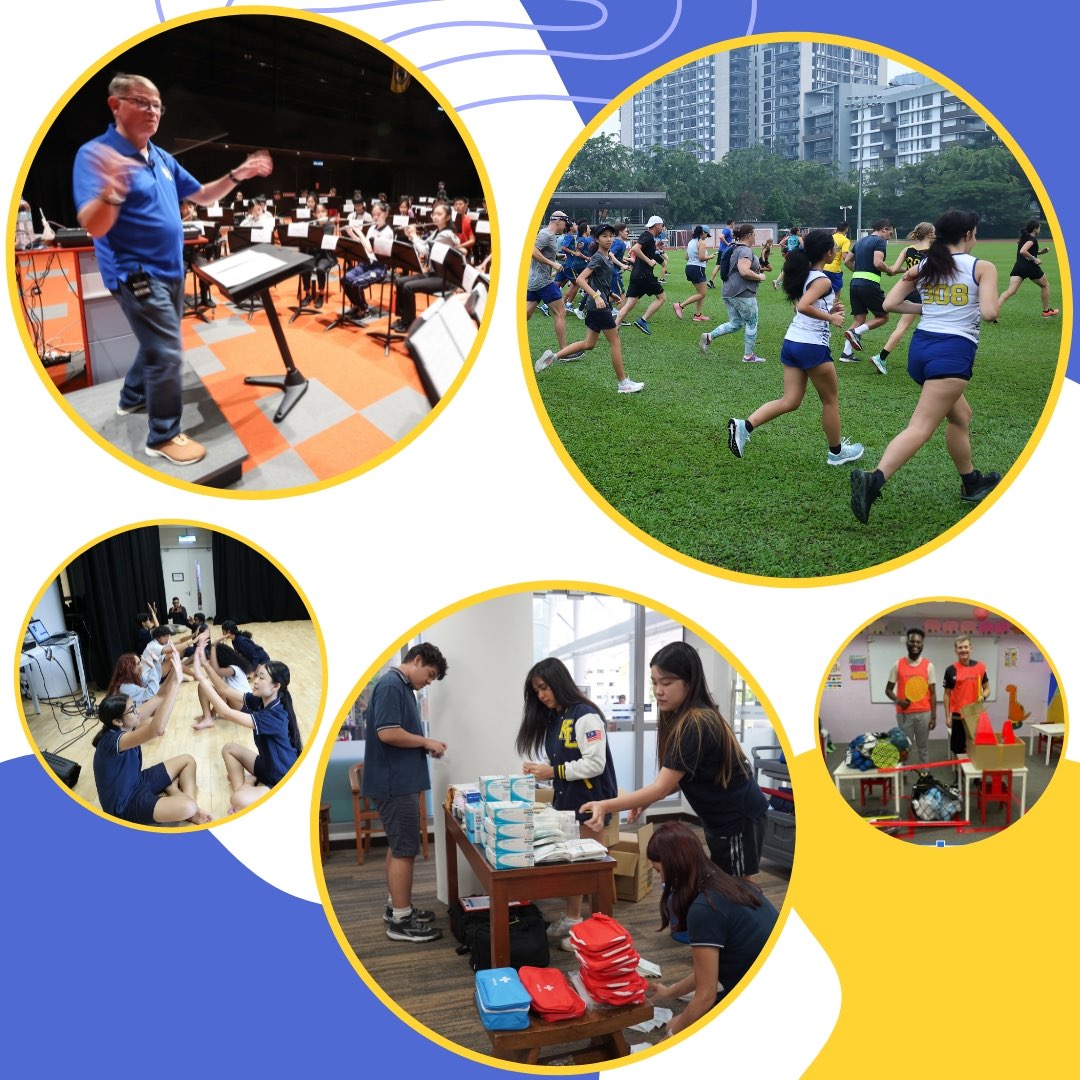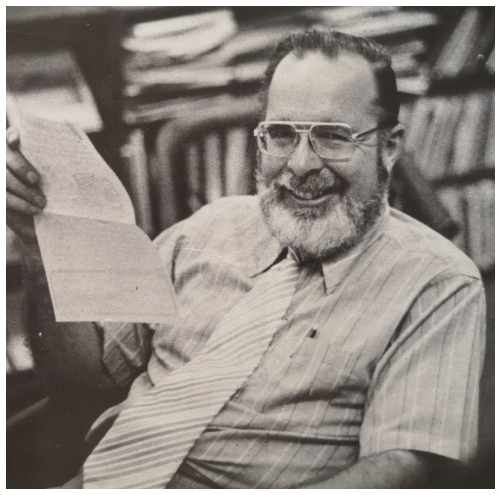Michael Dixon II started running through the Jesse Owens Circuit at the age of 5, and continued into college, before the injury ended his career. While the track has always been his passion, it has not defined him. Now Marketing Operations Director for an in-house creative agency at Anthem, Inc., he entered the profession as it was really picking up steam in the early noughties and has worked on many interesting campaigns, including LeBron James’ comic series for Powerade.
Michael reminisces about his time at ISKL, including being convinced to dance on stage by Karen Palko, with Lynette MacDonald, ISKL Director of Development and Alumni Engagement.
LM: How easy was it to settle in at ISKL, having already studied at another IASAS school, JIS?
MD: ISKL was my third international school following Cairo American College (CAC) and JIS. Settling in didn’t take long, mostly due to the ISKL community. I can remember attending several welcome events and everyone being very inclusive.
LM: Of course, settling in is what most new students hope to achieve, but you had your eyes set on a bigger prize, the Scott Smith Award. How important was competitive sport to you as a teenager?
MD: I remember reading about the award in the ISKL informational packet we received after hearing news we were moving again. It was definitely something I wanted to achieve, because sports were a big part of growing up. When moving to new places, I found sports to be the way to connect with people. Without sports, I would not have had so many opportunities to travel to other countries to compete against other students from around the world.
LM: The Scott Smith Award recognises leadership and sportsmanship, as well as athletic ability. Were those qualities you feel you already possessed, or did your coach help to develop and nurture them in you?
MD: I definitely lacked leadership and being successful in an individual sport like Track & Field didn’t help. During my sophomore and junior years, I left the leadership role to the seniors. Coaches Fred Miller and Peter Forsgren pushed me to be more of a leader, but like most adults looking back on their adolescent years, I was young and determined to do things my way. It wasn’t until senior year, Coach Forsgren challenged me to really lead by example; taking the team captain role and setting the tone for a year in which we knew there was little chance to three-peat.
LM: Do you recall how you felt when you received the award?
MD: It was a mixed sense of accomplishment and relief. From the beginning of the ceremony, I can remember sitting next to another fierce competitor, Mark McElroy (’97), whom I shared the award with, not knowing what was going to happen. It wasn’t until our then headmaster, Dr Richard Krajczar, opened the ceremony mentioning there were two winners, Mark and I immediately looked at one another as to say congratulations! It was a goal I had set, worked hard at and accomplished. It was a great feeling.

L-R: Track Practice with Coach Forsgren (1997), 1997 Scott Smith Award Winners
LM: When did your love of track and field begin? Describe the balancing act of being an individual competitor, but competing as part of a team.
I grew up in Beaverton, Oregon and attended a school directly across from NIKE headquarters where my mother was working as a fashion artist. In most states the earliest organized sports are typically soccer, basketball or baseball. In Oregon, it’s running. I started competing locally through the Jesse Owens Classic circuit at age 5 and it’s been a passion ever since. I loved track as an individual sports because I felt I was in control of my results. It wasn’t until ISKL I realized what it meant to compete as a team. Competing at ISKL meant more than taking the sum of our individual successes, but pushing each other to be better.
I love this story: The first day of track practice, Coach Forsgren lines us up and says, by the first 20-meter marker run at 50%; when you hit the 40-meter marker be at 75% speed and at the 60 marker I want you at 100% until you reach the 80-meter marker. Everyone is together at the first marker, half fall behind by the second marker. At the third marker it’s a dead sprint and you can sense a couple of people around you. At the final marker you look around to hopefully confirm victory and see Ramus Hoppe (’95), Paul Sist (’95) and Paul Gayan (’96) all thinking they won too. I couldn’t help think this is going to be one great season! And it was.
LM: I found a great photo of you in full flight in the hurdles during IASAS in Jakarta in your Junior year. You look amazing! Tell me about how you felt about IASAS, especially in Jakarta where you previously studied.
MD: Thank you. The coach would be a bit more critical saying stop gliding over the hurdle; get that leg down faster!
But IASAS, yes. It was a getaway. An experience to meet new people, places and cultures – and oh yeah, compete! The idea of hosting athletes or being a guest of a fellow athlete was amazing. The introduction to family traditions was something I always embraced and was thankful for the opportunity. Coming from another IASAS school was fun in the fact that there were always some familiar faces during competition. In most cases, I was competing against old friends. I never competed in IASAS while attending JIS. My family moved in the middle of my freshman year right before the 1994 IASAS Basketball Champion which ironically was held at ISKL and won by ISKL.
LM: You still hold 3 IASAS records – amazing! Is one more precious than the others? What do you remember of winning them?
MD: All three records are special in their own way. I set the high jump record in Taipei during my junior year. The record had been standing for 13 years which was one of the longest at the time. I can remember the sense of expectation having almost broken it the year prior. The best part was receiving my medal and record patch from our then headmaster Dr Richard Krajczar who was our travel sponsor/guest. It was great to win the championship with him there.
The long and triple jump were set in Bangkok my senior year and are probably the most rewarding, because there was a lot of hard work put in with our jump coach, Coach Christopher Vonn.

LM: You initially studied architecture at college. Tell us more about the creative and academic side of life at ISKL. What were your favorite subjects and which teachers were most influential? Do any particular moments stay with you?
MD: I really enjoyed creative art classes and I think everyone has at least one good Mr John Stupka story that probably involves a clay pot mysteriously breaking in the kiln. I’ve always had a passion for drawing, so when the architecture class was offered, I jumped at the chance to gain knowledge in sketching and drafting with the hope of becoming an architect. One day I remember him taking the entire classes to ride the new train system to Merdeka Square to sit outside and sketch. That’s when I decided on…my first major.
LM: You weren’t only found on the track, but did make a foray onto the stage at ISKL. Tell us about that and how it has helped in your adult life?
MD: Ms Karen Palko was able to get me to perform in one dance production. She asked me to come to the dance studio one day; I can remember there being a room full of girls in leotards. At that point it didn’t take too much convincing, but I was definitely nervous having never lifted girls. The experience was fun we had two great shows, and afterward I felt more comfortable on stage and but never entered any full stage productions. Although entering a comedy show amateur night is still on my bucket list.
LM: Like so many graduates, you left ISKL with a plan, and then that plan changed. You had Olympic ambitions that, through injury, weren’t realized. How did that feel at the time? How important was it for you to be able to move on that you had other strings to your bow, not just athletics and what advice do you have for other young athletes?
MD: When I arrived in Eugene, OR (aka Tracktown USA), my plan was to join the Oregon track team and work to get a scholarship by next year. Making the team as a walk-on decathlete, my next goal was to compete in US national trials by my second year. After tearing my hamstring multiple times, I was definitely upset knowing my collegiate athletic career was over before it really started. But I also knew I had other passions. The ability to “move on” is something international students do all the time. I refocused my attention to my bachelor’s degree and kept moving forward.
My advice for young athletes is to always have a goal and plan to reach that goal. And never think the reach of your goal is too far away.
LM: What drew you to business and marketing and led to your move to a different university and different course? How hard is it to make those decisions mid-stream?
MD: I took the opportunity to be closer to the family by transferring to Kennesaw State University (KSU) after my parents and brother moved from the Netherlands back to Atlanta, GA. From that standpoint, the decision wasn’t hard. KSU had a great business college and I was drawn to business marketing seeing a connection with creativity. There were a lot of creative agencies in Atlanta, and I thought a bachelor’s of business administration would provide a wide range of options that would allow me to find the right type of creative.
LM: You started your career in digital marketing right at the time when the internet was changing to give users a more interactive experience. They must have been very interesting days, being as it were on the crest of the wave. Tell us about your career development.
MD: I was lucky to find an opportunity immediately after college with a creative agency in Atlanta, GA. As a project manager, I produced B2B webinars for AT&T. I helped develop LeBron James’s first digital comic book series with Powerade. My first professional meeting was actually pitching a digital cross-promotion to Scoter Braun. It was definitely a fun period to be a creative content creator and marketer.
LM: Many young people now want to become Youtubers or game developers. What is your advice to anyone wanting to find their career in the digital content world?
MD: Be thoughtful and conscientious. The ease of becoming a digital content creator has propelled us into a reality that is sometimes not a reality.
LM: It was wonderful to see you at the Night of the ISKL Notables virtual gala reunion in December, looking very fit and well. How do you maintain your fitness now? Do you still have a competitive spirit? Any recent wins?
MD: Thank you! Baggy clothes help hide the ‘dad bod’. I still run, just not as competitive. I find running in half marathons is the right amount of pain I’m willing to endure these days. I’m actually looking forward to the day when larger organized running events return. My wife and daughter have turned me into a Disney Dad, so I’m anxious to compete in a RunDisney event.
LM: What do you miss most about ISKL, KL and Malaysia? (I’m wondering if it was Nasi Lemak or Char
Kway Teow that powered your amazing athleticism at ISKL?)
MD: Of course I miss the food, but I miss the experiences the most. When I graduated and left for college, I realized so many students were coming into college feeling that they were now “free” and independent. Living in KL and attending ISKL there’s a level of freedom and independence that comes with living internationally most US high school students never experience. I was blessed to travel and meet some amazing people. And I’m lucky to call some of those people today, my friends.
I would love to return to KL, with my family to see the new campus, connect with more alumni and continue sharing stories. So, thank you for allowing me to share a few of mine.


